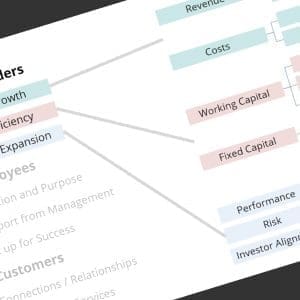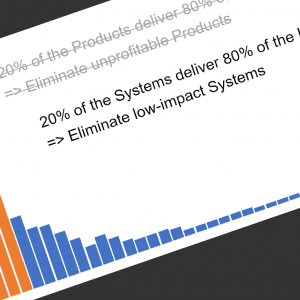In some companies, IT struggles to find a voice amid the other functional areas of the business – Finance, Operations, Sales and Marketing, even Human Resources. “Business Alignment”, a regular item on lists of Top 5 IT Concerns each year, pops up because (I believe) it’s difficult to glibly draw a line connecting IT systems and projects to the changing priorities of most organizations. I will admit to a small amount of cynicism here – part of the problem is simply that IT, raised in a digital, structured environment, tries to be too specific and deterministic, and struggles for the poetry that connects Patch Tuesday, Project Methodology, and Regression Testing to the visionary goals and tactical targets that the corporate Strategic Planning process reveals each year.
The root of the problem comes down to two factors: timing and approach. The first is the easiest to see, but slightly tricky to deal with – and it may need a first-pass at the second to grease the skids and tweak the planning process.

Timing
Simply put – if IT is reviewing the final Strategic Plan for the first time when the slide decks are complete, it’s way behind the process. Don’t get me wrong – it’s a great thing to be involved at this level, to understand the findings and the logic that builds up to them. But waiting until the end puts IT in a reactive state – based on what we see, we can change and adjust our plans accordingly. This is achievable, but it doesn’t give the Strategic Process a chance to understand any potential contribution from either internal IT systems and knowledge, or external advances that could be applied to current challenge areas and make them opportunities.
The solution is to get into the process earlier – those first conversations about opportunities, given the macro environment, changes in customers or competitors, insights from the Voice of the Customer, and advances in New Product Development. Interesting questions will inevitably come up …
- Can the ERP system support automated data collection to simplify challenging production lines / locations?
- Do deep-dive data analytics provide a potential answer to impenetrable market niches?
- Does a mobile-enabled sales force free up time and provide more flexibility to drive revenue?
- Can the ERP system support automated data collection to simplify challenging production lines / locations?
- (Tech) Does the physical infrastructure support higher availability on the shop floor?
- (Non-Tech) Have we Lean’ed out/simplified the process yet? (automate a mess, and you get an automated mess …)
- Do deep-dive data analytics provide a potential answer to impenetrable market niches?
- (Tech) Do we have the compute and storage capacity to support Big Data?
- (Non-Tech) Do we have clean data (with reasonably complete hierarchies and attributes)?
- Does a mobile-enabled sales force free up time and provide more flexibility to drive revenue?
- (Tech) Given our eMail and desktop/client support infrastructure and process, how flexible can we be with mobile device options?
- (Non-Tech) Will our corporate Security, Compliance, IP Protection policies and Training resources support the Pandora’s box of mobile access?
The critical time for these conversations is near the beginning of the life cycle for each initiative – to drive success, we need to lay out an attack plan (so we need the dependencies) and marshal our forces (given the challenge areas). IT will probably be involved – but so will Finance, Legal, HR, and Operations.
Where to Start?
But the new year approaches, and most IT groups aspire to start out with a completed IT Budget, derived from a well thought out set of short-term Objectives, that align with an IT Strategy – that itself aligns with the overall Corporate Strategy. If your timing is a bit off, and you haven’t established these connections with the process yet – where do we begin?
The wrong approach would be to fail over to the all-too-common understanding of IT – a cost center, overhead, with limited differentiating value-add. Many companies are a step above that – they see the opportunities, but are frustrated with their IT group’s lack of “agility” when it comes to new technology.
How to bridge the gap? There is a basic approach that we can take, to clarify the nature of the IT function and position it to align with fundamental Corporate Strategy. If we do this right, we can evolve into the more proactive approach outlined above – but only after that first fundamental credibility is established.





Comments (0)